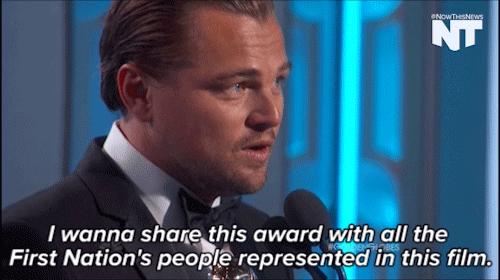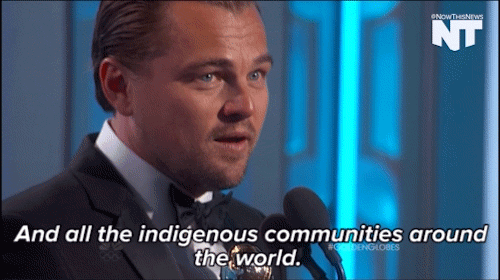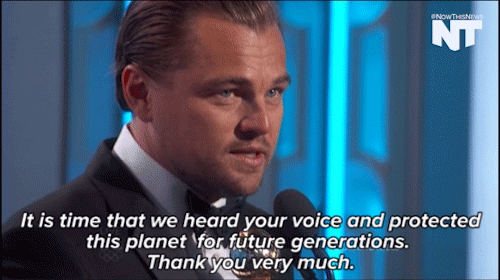Machine Learning, Big Data, Code, R, Python, Arduino, Electronics, robotics, Zen, Native spirituality and few other matters.
107 posts
Latest Posts by r3ds3rpent - Page 2

Magazine cover. “Japanese computers.” Byte. May 1982.

(Image caption: diagram of the research findings (Taken from article’s Table of Contents Image) bFGF is produced in the injured zone of the cerebral cortex. Ror2 expression is induced in some population of the astrocytes that receive the bFGF signal, restarting their proliferation by accelerating the progression of their cell cycle)
How brain tissue recovers after injury: the role of astrocytes
A research team led by Associate Professor Mitsuharu ENDO and Professor Yasuhiro MINAMI (both from the Department of Physiology and Cell Biology, Graduate School of Medicine, Kobe University) has pinpointed the mechanism underlying astrocyte-mediated restoration of brain tissue after an injury. This could lead to new treatments that encourage regeneration by limiting damage to neurons incurred by reduced blood supply or trauma. The findings were published on October 11 in the online version of GLIA.
When the brain is damaged by trauma or ischemia (restriction in blood supply), immune cells such as macrophages and lymphocytes dispose of the damaged neurons with an inflammatory response. However, an excessive inflammatory response can also harm healthy neurons.
Astrocytes are a type of glial cell*, and the most numerous cell within the human cerebral cortex. In addition to their supportive role in providing nutrients to neurons, studies have shown that they have various other functions, including the direct or active regulation of neuronal activities.
It has recently become clear that astrocytes also have an important function in the restoration of injured brain tissue. While astrocytes do not normally proliferate in healthy brains, they start to proliferate and increase their numbers around injured areas and minimize inflammation by surrounding the damaged neurons, other astrocytes, and inflammatory cells that have entered the damaged zone. Until now the mechanism that prompts astrocytes to proliferate in response to injury was unclear.
The research team focused on the fact that the astrocytes which proliferate around injured areas acquire characteristics similar to neural stem cells. The receptor tyrosine kinase Ror2, a cell surface protein, is highly expressed in neural stem cells in the developing brain. Normally the Ror2 gene is “switched off” within adult brains, but these findings showed that when the brain was injured, Ror2 was expressed in a certain population of the astrocytes around the injured area.
Ror2 is an important cell-surface protein that regulates the proliferation of neural stem cells, so the researchers proposed that Ror2 was regulating the proliferation of astrocytes around the injured areas. They tested this using model mice for which the Ror2 gene did not express in astrocytes. In these mice, the number of proliferating astrocytes after injury showed a remarkable decrease, and the density of astrocytes around the injury site was reduced. Using cultured astrocytes, the team analyzed the mechanism for activating the Ror2 gene, and ascertained that basic fibroblast growth factor (bFGF) can “switch on” Ror2 in some astrocytes.
This research showed that in injured brains, the astrocytes that show (high) expression of Ror2 induced by bFGF signal are primarily responsible for starting proliferation. bFGF is produced by different cell types, including neurons and astrocytes in the injury zone that have escaped damage. Among the astrocytes that received these bFGF signals around the injury zone, some express Ror2 and some do not. The fact that proliferating astrocytes after brain injury are reduced during aging raises the possibility that the population of astrocytes that can express Ror2 might decrease during aging, which could cause an increase in senile dementia. Researchers are aiming to clarify the mechanism that creates these different cell populations of astrocytes.
By artificially controlling the proliferation of astrocytes, in the future we can potentially minimize damage caused to neurons by brain injuries and establish a new treatment that encourages regeneration of damaged brain areas.
*Glial cell: a catch-all term for non-neuronal cells that belong to the nervous system. They support neurons in various roles.











50.1% of the US population lives in these 244 counties.
More similar maps >>

Odor Biomarker For Alzheimer’s: Urine Test Could Predict Disease Onset
A new study from the Monell Center, the U.S. Department of Agriculture (USDA), and collaborating institutions reports a uniquely identifiable odor signature from mouse models of Alzheimer’s disease. The odor signature appears in urine before significant development of Alzheimer-related brain pathology, suggesting that it may be possible to develop a non-invasive tool for early diagnosis of Alzheimer’s disease.
The research is in Scientific Reports. (full open access)

Motor Skills Affected by Alcohol in E-Cigarettes
Some commercially available e-cigarettes contain enough alcohol to impact motor skills, a new Yale University School of Medicine study shows.
The research is in Drug and Alcohol Dependence. (full open access)

Haha, Fat32

Görseli zaten paylaşmıştık ama Atmel de her gün ürünümüzü paylaşmıyor :) #atmel #tinylab #arduino #indiegogo by robotistan @ http://ift.tt/1Pea7r2

#sound #Arduino #mbed #make #Blender #Unity #GenerativeArt #ARM by prototechno @ http://ift.tt/1RDsP2i


DEC terminal finds itself viscously attacked by a bear.

Excited to start experimenting with this new #adafruit Feather Bluefruit! #arduino IDE compatible #atmega32u4 and Bluetooth LE in one tiny package! by arnie.martin @ http://ift.tt/1J3adFL

How I feel when I write anything in C++

Guys, you need to check this—-DIY Circuit Board Table Decor

Average rent in Berlin shown as heat map on the transit map.


During an interview, the Russos, directors of the upcoming Civil War and Infinity War, expressed interest in directing a Black Widow solo film!
Joe Russo, stated that they love the character, with his brother Anthony adding that they also have great admiration for Scarlett Johansson.
Joe continued that they, “find that [Black Widow] is one of (if not the) richest character in the Marvel universe. A very complex character, haunted by demons and her understanding of the world is fascinating. I think there is a lot that can be done with that character.“
(Via Newsarama)




Leonardo DiCaprio accepts his award for Best Actor in a Drama Film for ‘The Revenant’ and dedicates it to indigenous communities.
![[OC] Current Distribution Of Basque, The Last Pre-Indo-European Language In Western Europe [1060x950]](https://64.media.tumblr.com/725585b2c44fdec09e46fddf25337b04/tumblr_o0ux2xBhD01s6c1p2o1_500.jpg)
[OC] Current distribution of Basque, the last pre-Indo-European language in Western Europe [1060x950] CLICK HERE FOR MORE MAPS! thelandofmaps.tumblr.com

Helping Hand
Robots, video games, and a radical new approach to treating stroke patients.
BY KAREN RUSSELL
In late October, when the Apple TV was relaunched, Bandit’s Shark Showdown was among the first apps designed for the platform. The game stars a young dolphin with anime-huge eyes, who battles hammerhead sharks with bolts of ruby light. There is a thrilling realism to the undulance of the sea: each movement a player makes in its midnight-blue canyons unleashes a web of fluming consequences. Bandit’s tail is whiplash-fast, and the sharks’ shadows glide smoothly over rocks. Every shark, fish, and dolphin is rigged with an invisible skeleton, their cartoonish looks belied by the programming that drives them—coding deeply informed by the neurobiology of action. The game’s design seems suspiciously sophisticated when compared with that of apps like Candy Crush Soda Saga and Dude Perfect 2.
Bandit’s Shark Showdown’s creators, Omar Ahmad, Kat McNally, and Promit Roy, work for the Johns Hopkins School of Medicine, and made the game in conjunction with a neuroscientist and neurologist, John Krakauer, who is trying to radically change the way we approach stroke rehabilitation. Ahmad told me that their group has two ambitions: to create a successful commercial game and to build “artistic technologies to help heal John’s patients.” A sister version of the game is currently being played by stroke patients with impaired arms. Using a robotic sling, patients learn to sync the movements of their arms to the leaping, diving dolphin; that motoric empathy, Krakauer hopes, will keep patients engaged in the immersive world of the game for hours, contracting their real muscles to move the virtual dolphin.
Many scientists co-opt existing technologies, like the Nintendo Wii or the Microsoft Kinect, for research purposes. But the dolphin simulation was built in-house at Johns Hopkins, and has lived simultaneously in the commercial and the medical worlds since its inception. “We depend on user feedback to improve the game for John’s stroke patients,” Ahmad said. “This can’t work without an iterative loop between the market and the hospital.”
In December, 2010, Krakauer arrived at Johns Hopkins. His space, a few doors from the Moore Clinic, an early leader in the treatment of AIDS, had been set up in the traditional way—a wet lab, with sinks and ventilation hoods. The research done in neurology departments is, typically, benchwork: “test tubes, cells, and mice,” as one scientist described it. But Krakauer, who studies the brain mechanisms that control our arm movements, uses human subjects. “You can learn a lot about the brain without imaging it, lesioning it, or recording it,” Krakauer told me. His simple, non-invasive experiments are designed to produce new insights into how the brain learns to control the body. “We think of behavior as being the fundamental unit of study, not the brain’s circuitry. You need to study the former very carefully so that you can even begin to interpret the latter.”
Krakauer wanted to expand the scope of the lab, arguing that the study of the brain should be done in collaboration with people rarely found on a medical campus: “Pixar-grade” designers, engineers, computer programmers, and artists. Shortly after Krakauer arrived, he founded the Brain, Learning, Animation, Movement lab, or BLAM! That provocative acronym is true to the spirit of the lab, whose goal is to break down boundaries between the “ordinarily siloed worlds of art, science, and industry,” Krakauer told me. He believes in “propinquity,” the ricochet of bright minds in a constrained space. He wanted to create a kind of “neuro Bell Labs,” where different kinds of experts would unite around a shared interest in movement. Bell Labs is arguably the most successful research laboratory of all time; it has produced eight Nobel Prizes, and inventions ranging from radio astronomy to Unix and the laser. Like Bell,BLAM! would pioneer both biomedical technologies and commercial products. By developing a “self-philanthropizing ecosystem,” Krakauer believed, his lab could gain some degree of autonomy from traditionally conservative funding structures, like the National Institutes of Health.
The first problem that BLAM! has addressed as a team is stroke rehabilitation. Eight hundred thousand people in the U.S. have strokes each year; it is the No. 1 cause of long-term disability. Most cases result from clots that stop blood from flowing to part of the brain, causing tissue to die. “Picture someone standing on a hose, and the patch of grass it watered dying almost immediately,” Steve Zeiler, a neurologist and a colleague of Krakauer’s, told me. Survivors generally suffer from hemiparesis, weakness on one side of the body. We are getting better at keeping people alive, but this means that millions of Americans are now living for years in what’s called “the chronic state” of stroke: their recovery has plateaued, their insurance has often stopped covering therapy, and they are left with a moderate to severe disability.
In 2010, Krakauer received a grant from the James S. McDonnell Foundation to conduct a series of studies exploring how patients recover in the first year after a stroke. He was already well established in the worlds of motor-control and stroke research. He had discovered that a patient’s recovery was closely linked to the degree of initial impairment, a “proportional recovery rule” that had a frightening implication: if you could use early measures of impairment to make accurate predictions about a patient’s recovery three months later, what did that say about conventional physical therapy? “It doesn’t reverse the impairment,” Krakauer said.
Nick Ward, a British stroke and neurorehabilitation specialist who also works on paretic arms, told me that the current model of rehabilitative therapy for the arm is “nihilistic.” A patient lucky enough to have good insurance typically receives an hour each per day of physical, occupational, and speech therapy in the weeks following a stroke. “The movement training we are delivering is occurring at such low doses that it has no discernible impact on impairment,” Krakauer told me. “The message to patients has been: ‘Listen, your arm is really bad, your arm isn’t going to get better, we’re not going to focus on your arm,’ ” Ward said. “It’s become accepted wisdom that the arm doesn’t do well. So why bother?”
Krakauer and his team are now engaged in a clinical trial that will test a new way of delivering rehabilitation, using robotics and the video game made by Ahmad, Roy, and McNally, who make up an “arts and engineering” group within the Department of Neurology. Krakauer hopes to significantly reduce patients’ impairment, and to demonstrate that the collaborative model of BLAM! is “the way to go” for the future study and treatment of brain disease.
Reza Shadmehr, a Johns Hopkins colleague and a leader in the field of human motor-control research, told me, “He’s trying to apply things that we have developed in basic science to actually help patients. And I know that’s what you’re supposed to do, but, by God, there are very few people who really do it.”
“You bank on your reputation, in the more conventional sense, to be allowed to take these risks,” Krakauer said. “I’m cashing in my chits to do something wild.”
In 1924, Charles Sherrington, one of the founders of modern neuroscience, said, “To move things is all that mankind can do; for such the sole executant is muscle, whether in whispering a syllable or in felling a forest.” For Sherrington, a human being was a human doing.
Yet the body often seems to go about its business without us. As a result, we may be tempted to underrate the “intelligence” of the motor system. There is a deep-seated tendency in our culture, Krakauer says, to dichotomize brains and brawn, cognition and movement. But he points out that even a movement as simple as reaching for a coffee cup requires an incredibly sophisticated set of computations. “Movement is the result of decisions, and the decisions you make are reflected in movements,” Krakauer told me.
Motor skills, like Stephen Curry’s jump shot, require the acquisition and manipulation of knowledge, just like those activities we deem to be headier pursuits, such as chess and astrophysics. “Working with one’s hands is working with one’s mind,” Krakauer said, but the distinction between skill and knowledge is an ancient bias that goes back to the Greeks, for whom techne, skill, was distinct from episteme, knowledge or science.
Keep reading
![Visualizing Growth In The U.S.: Take A Look At America’s Economic Growth [831 X 1200] CLICK HERE FOR](https://64.media.tumblr.com/af5660ab4b063692ac68d6556a9966d3/tumblr_ny92cbb3iu1s6c1p2o1_500.jpg)
Visualizing Growth in the U.S.: Take a look at America’s Economic Growth [831 X 1200] CLICK HERE FOR MORE MAPS! thelandofmaps.tumblr.com
Solar System: 5 Things To Know This Week
Our solar system is huge, so let us break it down for you. Here are 5 things to know this week:
1. Make a Wish

The annual Leonids meteor shower is not known for a high number of “shooting stars” (expect as many as 15 an hour), but they’re usually bright and colorful. They’re fast, too: Leonids travel at speeds of 71 km (44 miles) per second, which makes them some of the fastest. This year the Leonids shower will peak around midnight on Nov. 17-18. The crescent moon will set before midnight, leaving dark skies for watching. Get more viewing tips HERE.
2. Back to the Beginning

Our Dawn mission to the dwarf planet Ceres is really a journey to the beginning of the solar system, since Ceres acts as a kind of time capsule from the formation of the asteroid belt. If you’ll be in the Washington DC area on Nov. 19, you can catch a presentation by Lucy McFadden, a co-investigator on the Dawn mission, who will discuss what we’ve discovered so far at this tiny but captivating world. Find out how to attend HERE.
3. Keep Your Eye on This Spot

The Juno spacecraft is on target for a July 2016 arrival at the giant planet Jupiter. But right now, your help is needed. Members of the Juno team are calling all amateur astronomers to upload their telescopic images and data of Jupiter. This will help the team plan their observations. Join in HERE.
4. The Ice Volcanoes of Pluto

The more data from July’s Pluto flyby that comes down from the New Horizons spacecraft, the more interesting Pluto becomes. The latest finding? Possible ice volcanoes. Using images of Pluto’s surface to make 3-D topographic maps, scientists discovered that some mountains on Pluto, such as the informally named Piccard Mons and Wright Mons, had structures that suggested they could be cryovolcanoes that may have been active in the recent geological past.
5. Hidden Storm

Cameras aboard the Cassini spacecraft have been tracking an impressive cloud hovering over the south pole of Saturn’s moon Titan. But that cloud has turned out to be just the tip of the iceberg. A much more massive ice cloud system has been found lower in the stratosphere, peaking at an altitude of about 124 miles (200 kilometers).
Make sure to follow us on Tumblr for your regular dose of space: http://nasa.tumblr.com
The Paradoxical Commandments
The Paradoxical Commandments were written in 1968 by Dr. Kent M. Keith. Mother Theresa reffered to them often. People are illogical, unreasonable, and self-centered. Love them anyway. If you do good, people will accuse you of selfish ulterior motives. Do good anyway. If you are successful, you will win false friends and true enemies. Succeed anyway. The good you do today will be forgotten tomorrow. Do good anyway. Honesty and frankness make you vulnerable. Be honest and frank anyway. The biggest men and women with the biggest ideas can be shot down by the smallest men and women with the smallest minds. Think big anyway. People favor underdogs but follow only top dogs. Fight for a few underdogs anyway. What you spend years building may be destroyed overnight. Build anyway. People really need help but may attack you if you do help them. Help people anyway. Give the world the best you have and you'll get kicked in the teeth. Give the world the best you have anyway. © Copyright Kent M. Keith 1968, renewed 2001
Alan Turing and the Halting Problem
By now I’m sure most of you saw Saturday’s Google doodle, commemorating Alan Turing’s 100th birthday.
Turing, as you’ve probably either read or already knew, was a British mathematician regarded as the father of computer science. His work as a codebreaker during the second world war contributed substantially to the allied victory. Tragically, not even his invaluable service to his country was enough to save him from persecution for being homosexual, leading to his untimely death at the age of 41.

Turing made many contributions to computer science, but the one that stands out is the concept the doodle illustrated: the Turing machine. A Turing machine isn’t an actual machine, or even a blueprint for one. It’s a mathematical idealization of a computer, conceived by Turing long before real computers existed. The centrality of the Turing machine concept in computer science is why every software engineer you know squealed with delight on seeing that doodle.
Keep reading

The U.S. is increasing its attacks on sprawling ISIS oil fields in eastern Syria. https://t.co/PZyFcdonkd
Source: twitter / nytgraphics
http://www.kurzweilai.net/these-self-propelled-microscopic-carbon-capturing-motors-may-reduce-carbon-dioxide-levels-in-oceans?utm_source=KurzweilAI+Weekly+Newsletter&utm_campaign=aec011d0f7-UA-946742-1&utm_medium=email&utm_term=0_147a5a48c1-aec011d0f7-282055766



Join the movement to make two years of community college as free and universal as high school is today at HeadsUpAmerica.us/Act.

As fragile as a soap bubble seems, these films have remarkable powers of self-healing. The animation above shows a falling water droplet passing through a soap film without bursting it. An important factor here is that the water droplet is wet–passing a dry object through a soap film is a quick way to burst it, as those who have played with bubbles know. The droplet’s inertia deforms the soap film, creating a cavity. If the drop’s momentum were smaller, the film could actually bounce the droplet back like a trampoline, but here the droplet wins out. The film breaks enough to let the drop through, but its cavity quickly pinches off and the film heals thanks to the stabilizing effect of its soapy surfactants. (Image credit: H. Kim, source)

NASA Confirms Evidence That Liquid Water Flows on Today’s Mars
These dark, narrow, 100 meter-long streaks called recurring slope lineae flowing downhill on Mars are inferred to have been formed by contemporary flowing water. Recently, planetary scientists detected hydrated salts on these slopes at Hale crater, corroborating their original hypothesis that the streaks are indeed formed by liquid water. The blue color seen upslope of the dark streaks are thought not to be related to their formation, but instead are from the presence of the mineral pyroxene. The image is produced by draping an orthorectified (Infrared-Red-Blue/Green(IRB)) false color image (ESP_030570_1440) on a Digital Terrain Model (DTM) of the same site produced by High Resolution Imaging Science Experiment (University of Arizona). Vertical exaggeration is 1.5.
Credits: NASA/JPL/University of Arizona

Link Between High Childhood IQ and Bipolar Disorder Discovered
Individuals who scored in the top 10% of manic features had a mean childhood IQ which was almost 10 points higher than those scoring in the lowest 10% of manic features. The association between IQ and manic features appeared to be strongest for verbal IQ (VIQ).
The research will appear in British Journal of Psychiatry.
Image: The researchers examined data from ALSPAC to look for an association between measures of childhood IQ at age eight and lifetime manic features assessed at 22-23 years. Image is for illustrative purposes only.



The Quicksort Algorithm
Quicksort is the fastest known comparison-based sorting algorithm (on average, and for a large number of elements), requiring O(n log(n)) steps. By convention, n is the number of elements to be compared and big O is a function of those elements. Quicksort is a recursive algorithm which first partitions an array according to several rules:
Pick an element, called a pivot, from the array.
Reorder the array so that all elements with values less than the pivot come before the pivot, while all elements with values greater than the pivot come after it (equal values can go either way). After this partitioning, the pivot is in its final position. This is called the partition operation.
Recursively apply the above steps to the sub-array of elements with smaller values and separately to the sub-array of elements with greater values.
Quicksort was invented by Tony Hoare and has undergone extensive analysis and scrutiny, and is known to be about twice as fast as the next fastest sorting algorithm. In the worst case, however, quicksort is a slow n² algorithm (and for quicksort, “worst case” corresponds to already sorted). (Click this link for an example of the Quicksort Algorithm written in C)
Credit: Wolfram Alpha/Wikipedia